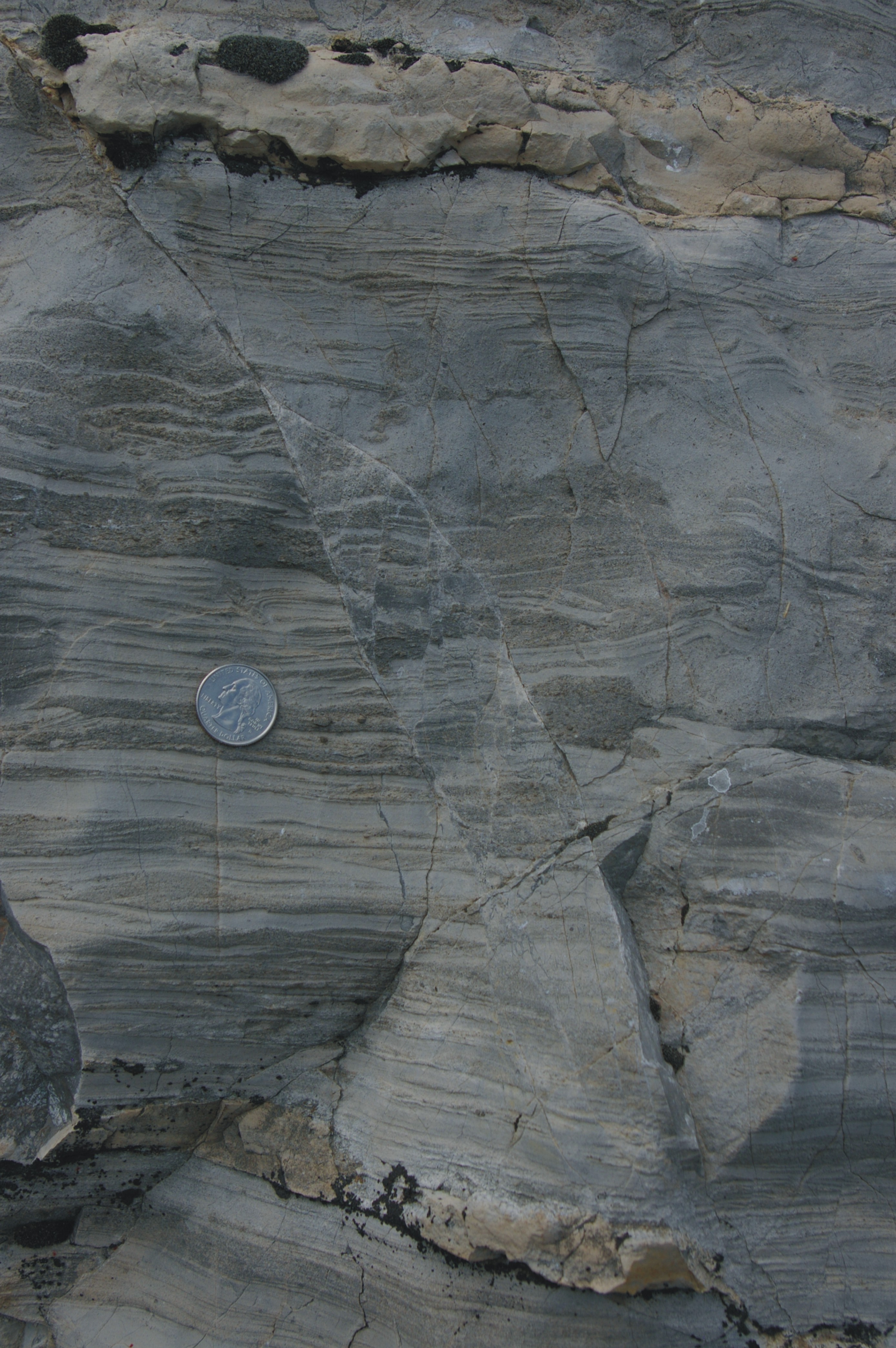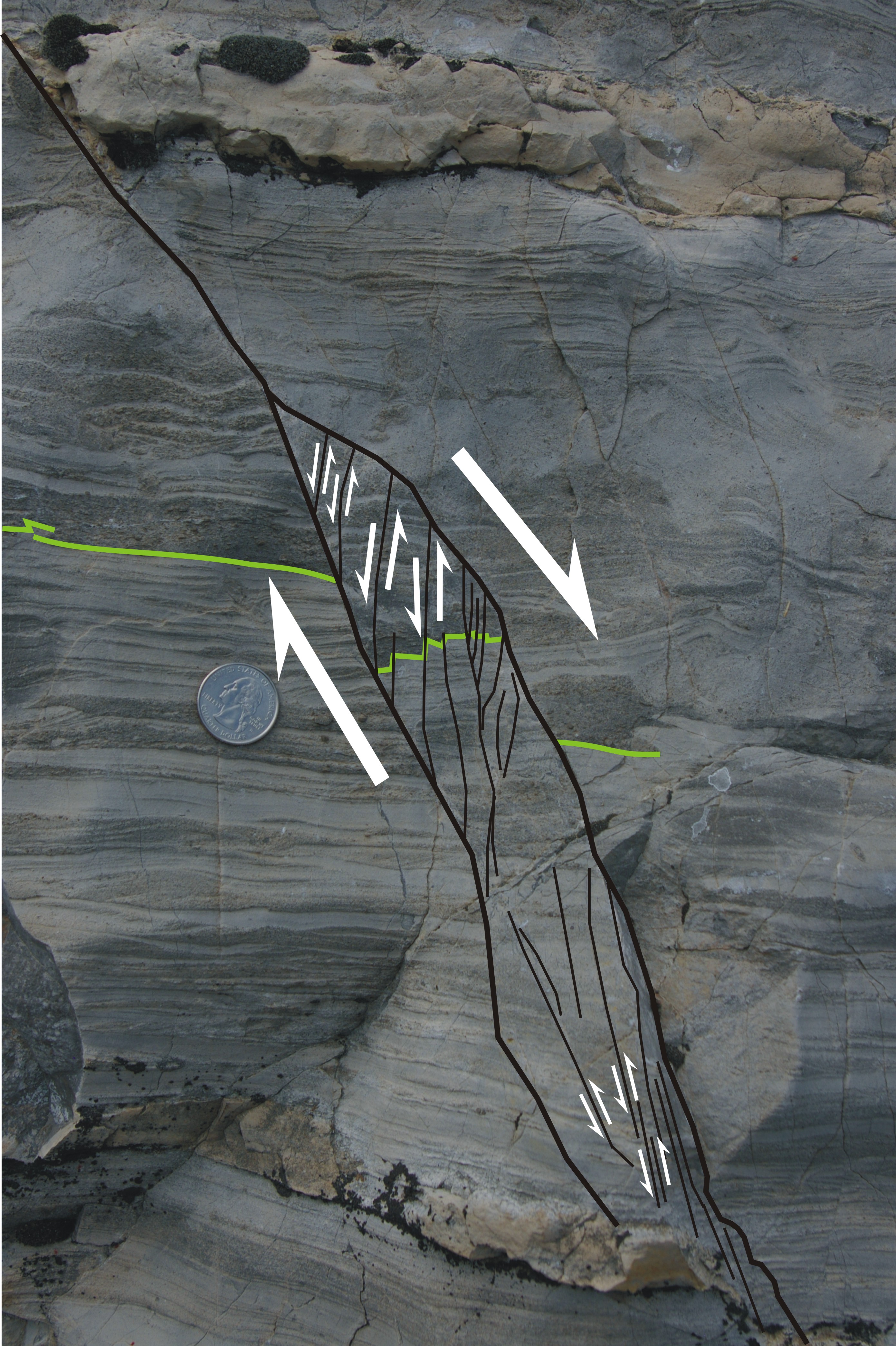Check it out: In the canyon of the Jefferson River, Montana, you can find yourself some limestone (Mississippian Madison Group, I think of the Lodgepole Formation) that has seen a wee bit of faulting:
And here’s an annotated copy… Both of these images are enlargeable by clicking through (twice):
Note the quarter for scale: this is very fine faulting (very small offsets). The thing that struck me as cool (and thus photo-worthy) about this outcrop is the sense of offset on the main “master” fault, which runs from upper left to lower right, branching into two strands as it goes. Compare this to the smaller faults which cut through the block between the two strands of the master fold. They show the opposite sense of offset! (Embiggen it if you don’t believe me.)
While the two strands of the master fault show dextral/clockwise kinematics (a “normal” sense of offset with the hanging wall moving down with respect to the foot wall), the smaller faults show sinistral/counterclockwise kinematics: here the right side is climbing up relative to the left side. It looks like what’s happening here is that there is a significant compactional element to the stresses these limestones suffered enjoyed, with σ1 oriented from the upper right towards the lower left. As they were compressed, the broken slivers of the central pod of limestone (bounded by the two strands of the master fault) “bookshelfed” relative to their neighbors: think of encyclopedia volumes slumping down relative to the volume next door. If this is the right interpretation, it would have resulted in shortening of the rock from lower-left to upper-right. At least that’s the best explanation I can come up with for this anomaly. Anyone else want to chime in with an interpretation?



That’s super-cool, I love microfaults.
Hi Callan,
what happens if you take your pictures and make a projection on top of San Andreas Fault?
Simon
Not sure I follow… What do you mean?